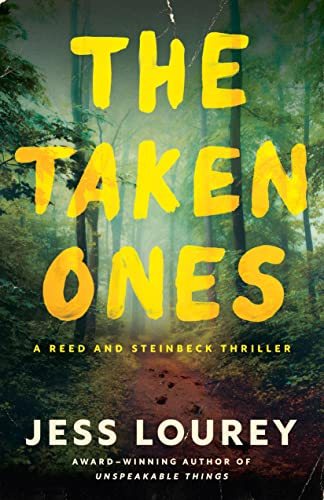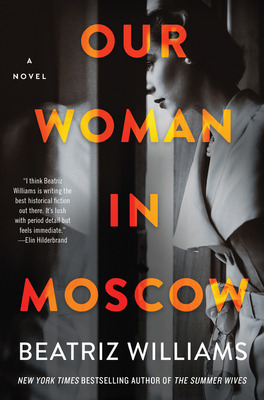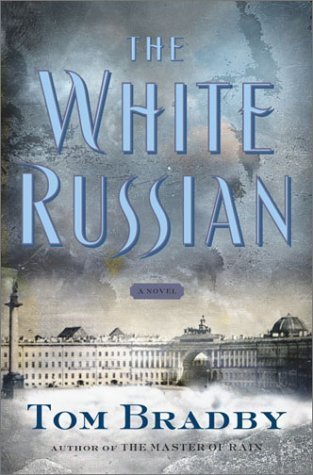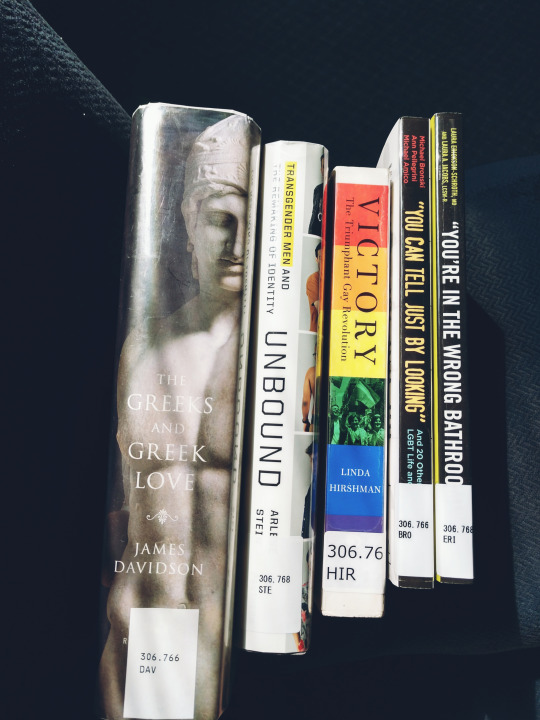#arlene stein
Text
[“I never felt like I was born in the wrong body,” he says, referring to the dominant medical discourse, though he hated looking in the mirror and says he “felt extreme discomfort” with the body he had. Lucas has been binding his chest for two years using a compression sports bra, always a little too tight, usually followed by a T-shirt and a man’s shirt. He does so for safety, because he sometimes goes to rural Putnam County: “very small, really Southern places,” doing HIV education. “If they knew I was queer, let alone trans, I would probably be killed, so I kind of have to keep all of that very much on the ‘down low’ when I’m doing work out in the community.” But to his co-workers he is “very, very out.” For Lucas, undergoing top surgery is an assertion of what some feminists call bodily autonomy. Pro-choice activists argue that the government has no right to tell women what to do with their body; transgender activists say that they have the right to change their body if they please.
Lucas is at the surgeon’s office with Oliver, a former boyfriend who is also a bearded trans man; and Rachel, a bisexual Latina, his “soul mate and sister.” Lucas says he has “always known” he wanted top surgery,” even before he began injecting testosterone. A few friends in Gainesville who had undergone surgery with Dr. Garramone became mentors to younger trans people in town like Lucas, directing them to friendly therapists and doctors, and helping them get letters for testosterone. Having crowdfunded the $7,000 he needed for top surgery, Lucas is giving away $500 to charity.
And then there is Nadia, a twenty-eight-year-old from St. Louis who works as an employment coach at a nonprofit agency. The odd girl out, she is having her chest masculinized, but not as part of a gender transition. As a how-to book suggests, top surgery is “not just for those transitioning from female to male” but also for others on the gender spectrum, including “gender non-conforming, gender fluid, bi-gender, butch, and so on.” Nadia feels some camaraderie with trans men undergoing top surgery and considers herself “near the trans community, but not in it.” She has short brown hair, bushy eyebrows, and olive skin, and she is wearing large horn-rimmed glasses, a men’s shirt, and hip-hugging straight-leg jeans that look baggy on her slender frame.
When Nadia was twenty-one, her breasts suddenly grew to about a 32C. “They just went boom,” she says, and she told me they felt outsized for her small frame. At certain points in her monthly cycle, when they bloomed even more, she couldn’t even bring herself to get dressed. She felt more comfortable in an androgynous style, wore men’s clothing, and hated the way her buxom bosom made her clothes fit. And she loathes having them touched. She identifies as female and has no interest in taking testosterone, but she sees her breasts as an impediment, a part of her body that does not reflect how she sees herself. Nadia’s queer circle includes trans friends with whom she shares a deep sense of alienation from standard-issue notions of femaleness. She is here with her girlfriend, Flora, an art student whom she met on OkCupid four years ago; the two were drawn together by their mutual interest in art, politics, and graphic novels.
Nadia upends conventional notions of what women should look like and how they should be. She’ll remain female, but she shares with the others here today the belief that their breasts don’t fit and that by changing their bodies they can become more comfortable in their skin and more successful in their lives.”]
arlene stein, from unbound: transgender men and the remaking of identity, 2018
297 notes
·
View notes
Link
They wrote the soundtrack of a generation. Irving Berlin, Harold Arlen, Jerome Kern, Harry Warren, Jimmy van Heusen, Victor Young, and more...
#irving berlin#harold arlen#jerome kern#jule stein#jay livington#frank loesser#jimmy van heusen#harry warren#sammy fain
2 notes
·
View notes
Text









feburary and march 2024
2.7 - All the Young Dudes: 'Til the End by MsKingBean (4/5) 📘🌈
2.14 - The Troop by Nick Cutter (1/5) 📘📚🎯
2.14 - The Taken Ones by Jess Lourey (3/5) 🎧📘
2.14 - Enchanted in Edinburgh by Juno Linden (3/5) 📘📚
2.22 - Unbound: Transgender Men and the Remaking of Identity by Arlene Stein (4/5) 📙🌈📚
2.26 - Our Woman in Moscow by Beatriz Williams (4/5) 🎧📘
3.12 - The Outsider by Stephen King (3/5) 🎧📘
3.24 - The White Russian by Tom Bradby (5/5) 📘
#bb reads#bb reads 2024#pink = fanfiction#red = DNF#🅱 = botm#🎧 = audiobook#📘 = fiction#📙 = non-fiction#🌈 = lgbtq+#📚 = borrowed#💱 = translated#🎯 = 2024 goal read#⏸ = reread
0 notes
Text
Brazil discovers Pan American gold in the ring and on the beach.

Brazil discovers Pan American gold in the ring and on the beach. As the first week of competition in cold Santiago came to a conclusion on Friday, the United States gold rush also ended, and Brazilians punched and spiked their way to Pan American Games gold. Beach volleyball is regarded as a national sport in Brazil, where the top-ranked men's and women's teams, Andre Stein and George Souto, and Patricia Ramos and Duda Lisboa, respectively, returned home with both titles after putting on impressive performances beneath the cloud-covered Andes mountains.
Brazilian boxers, led by twice-world champion and Olympic silver medallist Beatriz Ferreira, were amassing 12 medals, including four gold, on the opposite side of the capital of Chile. Prior to losing to the United States two weeks earlier, Ramos and Lisboa were world champions in 2022. They were once again victorious, defeating Melissa Humana-Paredes and Brandie Wilkerson of Canada 2-0. In women's beach volleyball, the silver was Canada's first medal at a Pan American Games. The two teams, who included world winners, played at the high caliber anticipated in a close final (22–20, 22–18).
After needing three sets to defeat Jorge Alayo and Noslen Diaz of Cuba, Andre Loyola and George Souto had to put in a little more time and effort into the chilly evening in order to clinch the golden double. Beach volleyball players Marco and Esteban Grimalt, two of Chile's most well-known athletes, were unable to hold onto the gold medal they won in Lima four years prior, but the cousins triumphed 2-1 over American players Logan Webber and Hagen Smith to win a bronze medal that thrilled the boisterous crowd waving flags. Olympic tickets were punched and thirteen gold medals were awarded on a hectic day in the boxing arena.
With every fighter in the finals having guaranteed a quota position for the Olympics in Paris, winning a silver medal came with an added benefit. The first Brazilian woman to win gold was Ferreira, who defeated Colombia's Angie Paola Valdes Pana 5-0 to win the women's 60 kilogram title. On the other hand, the top three finishers were Jucielen Romeu (57 kg), Barbara Maria Dos Santos (66 kg), and Caroline Barbosa (50 kg). Cuba, a boxing powerhouse, only managed two gold medals; double Olympic champion Julio Cesar La Cruz won the men's 92kg final, while Arlen Lopez Cardona won the 80kg weight class.
Both the US and Canada had two champions: Joshua Edwards of the US won the super heavyweight (+92 kg) title, while Jahmal Harvey of Canada won the 57 kg title. In the 75-kilogram women's division, Tammara Thibeault of Canada won 5-0 to add Pan American gold to her world and Commonwealth Games wins. The winner was Atheyna Bylon of Panama. Wyatt Sanford triumphed for Canada as well, winning gold in the 63.5 kg weight division. "Out of all the tournaments I've been to, I've been able to capture gold and I was missing Pan Ams," Thibeault stated. "Now missing the Olympics, but hopefully we're on the right path and that's what we're going to get."
Emiliano Hernandez and Duilio Carrillo won the men's relay to help Mexico maintain their dominance in the modern pentathlon, taking home all five gold medals available in Chile. With 35 gold and 80 overall medals, such contribution helped propel Mexico into second position on the medal tally. The United States led the field with 61 gold and 152 total after amassing 59 gold in the first five days of competition. Despite this, they have only added two more gold since then.
ALSO READ: Cuba’s National Ballet marks its 75th anniversary
Read the full article
0 notes
Text
2023 Reads!
Here's my list of everything I've read for 2023! I'll be updating it regularly as the year goes on.
I'm currently in the middle of going through my backlog of books I've read and posting reviews, which will then be linked on the list! If you see a book on the list you're interested in hearing my thoughts on, shoot me an ask or a DM and I'll respond asap.
The list is under the read more since it's pretty long! A few notes:
- Bolded titles are favorites
- Blue-colored titles are non-fiction
River of Teeth by Sarah Gailey
They Both Die At The End by Adam Silvera
The Underneath by Kathi Appelt
The Magic Fish by Trung Le Nguyen
The Obesity Myth by Paul Campos
This is Our Rainbow edited by Katherine Locke
Too Bright To See by Kyle Lukoff
Ellen Outside The Lines by A.J. Sass
The Insiders by Mark Oshiro
The Ship We Built by Lexie Bean
The Thread That Binds by Cedar McCloud
The True Meaning of Smekday by Adam Rex
Damsel by Elana K. Arnold
This Common Secret by Susan Wicklund
The Voting Booth by Brandy Colbert
May the Best Man Win by Z.R. Ellor
Let’s Talk About Love by Claire Kann
Different Kinds of Fruit by Kyle Lukoff
We Cast A Shadow by Maurice Carlos Ruffin
Heart of a Samurai by Margi Preus
The Glass Castle Jeannette Walls
Out In America edited by Michael Goff
The Golden Hour by Niki Smith
Every Body Shines edited by Cassandra Newbould
Ophelia and the Marvelous Boy by Karen Foxlee
The Sky Blues by Robbie Couch
The Bride was A Boy by Chii
Belle of the Ball by Mari Costa
Counting By 7s by Holly Goldberg Sloan
In The Shadow of the Throne by Kate Sheridan
Act Cool by Toby McSmith
Embrace Your Size by Hara
The Third Person by Emma Grove
Meet Cute Diary by Emery Lee
Summer of Salt by Katrina Leno
Fat Chance, Charlie Vega by Crystal Maldonado
You’re The Only One I’ve Told by Meera Shah
The Land of Stories #1: The Wishing Spell by Chris Colfer
A Boy and His Bot by Daniel H. Wilson
Alone by Megan E. Freeman
The Gentleman’s Guide to Vice and Virtue by Mackenzi Lee
That Sky Blue Feeling Vol. 1 by Okura
If I See You Again Tomorrow by Robbie Couch
What We Don’t Talk About When We Talk About Fat by Aubrey Gordon
Our Dreams at Dust Vol. 1 by Yuhki Kamatani
Our Dreams at Dust Vol. 2 by Yuhki Kamatani
Our Dreams at Dust Vol. 3 by Yuhki Kamatani
Our Dreams at Dust Vol. 4 by Yuhki Kamatani
Other Boys by Damian Alexander
Fun Home by Alison Bechdel
In Limbo by Deb JJ Lee
This One Summer by Mariko Tamaki
On A Sunbeam by Tillie Walden
Tess of the Road by Rachel Hartman
Below the Belt edited by Trystan T. Cotten
Amelia Gray is Almost Okay
Unbound by Arlene Stein
The 57 Bus by Dashka Slater
Nimona by N.D. Stevenson
Our Dining Table by Mita Ori
I Think Our Son Is Gay Vol. 1 by Okura
I Think Our Son Is Gay Vol. 2 by Okura
Are You Listening by Tillie Walden
I Think Our Son Is Gay Vol. 3 by Okura
The Talk by Darrin Bell
I Think Our Son Is Gay Vol. 4 by Okura
Wake Up Little Susie by Rickie Solinger
New Kid by Jerry Craft
Junior High by Sara & Tegan Quin, Illustrated by Tillie Walden
Fat Talk by Virginia Sole-Smith
0 notes
Text
handmaidens 16.3.2023
Fwd: I have been asked about the handmaidens....this is why they are coming out so strongly. Read the PDFs below.
Inbox
Natalie Ginsburg <[email protected]>
2:26 PM (5 minutes ago)
to Sharon, Shoshana, Efrat, Hannetjie, Shelley, Tamar, Carlo, Arlene, Shos, Flor, Dori, me, Vicki, Bessie, David, Arthur, Dorit, Jill, Guido, Eunice, Jenny, Janeen, Roni, Yehudiet, Brenda, yehudit, hanna, orliamira, Pam, Dannie, edu, Anita, Daisy, Juliet, Shosh
---------- Forwarded message ---------
From: Natalie Ginsburg <
>
Date: Thu, Mar 16, 2023 at 2:23 PM
Subject: Fwd: I have been asked about the handmaidens....this is why they are coming out so strongly. Read the PDFs below.
To: Zianda Goldstuck <
>, Warren Goldstuck <
>, Amy Stein <
>, Arthur Goldstuck <
>, Jayna Goldstuck <
>, Natalie Ginsburg <
>, Shirley Goldstuck <
>, Charles Goldstuck <
>, Daniel Goldstuck <
>, Daphne Miller <
>, Glenn Stein <
>, Kelly Goldstuck <
>, Ros and Jack Todes <
>
Date: Wed, Mar 15, 2023 at 8:21 AM
Subject: I have been asked about the handmaidens....this is why they are coming out so strongly. Read the PDFs below.
These are all reports which have come out in the news about what is happening and will happen with
women in Israel.
Note that the young girl who was not allowed to sing was prevented from singing because of ONE haredi man in the audience who objected. That the rabbis pay no attention to the fact that a woman was threatened by her husband who was jailed for saying he would kill her......and yet they try to force her to make a compromise. And this when the religious courts are being strengthened.
How many of you have heard of Adina Bar Shalom, the daughter of Ovadia Yosef.....I remember her years ago when I first heard her speak and was so impressed at her openness. Such a pity that the video of her speaking of the current situation is in Hebrew as she speaks of how the current government will end academia in five years. She speaks of how her father never pushed away his non religious family. How we lived together once. How a man on the television says how can he explain to his child that there are Jews who drive on Shabbat. She says each group has its own ethics and own good deeds.
https://www.tabletmag.com/sections/israel-middle-east/articles/adina-bar-shalom
-|And this is the handmaidens today in the day of rage
-
0 notes
Quote
Until now, the Republican Party has mainly drawn its leadership from the secular right. The Christian right has been a powerful presence during the past few decades, but mainly at the local and state level. And it has distanced itself from the xenophobic right, at least publicly. Trump is changing all of that.
Understanding Trumpism by Arlene Stein
3 notes
·
View notes
Text
minimizing and maximizing lesbian identities
Selection from “Identity Crises: Who is a Lesbian, Anyway?” by Vera Whisman, in Sisters, Sexperts, Queers: Beyond the Lesbian Nation, ed Arlene Stein, 1993.
This process of defining who is a lesbian is much more than a word game. It is a collective attempt to make sense of our history, figure out our present, and strategize for our future. It lurks beneath contemporary debates about bisexuality, butch-femme roles, and s/m sexuality. It haunts our discussions of political strategies, such as separatism and assimilation. And lately, this process of definition is posing vexing questions which seem ever more difficult to answer.
The theory of lesbian feminism once promised an alternative to patriarchal culture, where differences of race and class would disappear under the force of sisterhood, and where differences in sexual tastes would disappear under the force of consciousness-raising. But many women not only refused to ignored difference, they actually began to embrace it, and to rub up against boundaries. We haven’t all rallied around a shared identity as lesbians; today we don’t even agree on what the word means. Does that mean our movement is losing its base--or that the base is becoming broader and more diverse? [...]
Every definition has placed some lesbians in the blessed inner circle and some outside it. Is a woman who identifies herself as a dyke but who’s never slept with a woman a lesbian? Is a lesbian who sleeps with men really a lesbian? What about a lesbian who sleeps with women, but has had a primarily heterosexual past? If she becomes involved with a man next year, was she ever a true lesbian? [...]
Identities are often difficult to pin down. They are diverse and multiple. It’s impossible to identify with a single conception of a “woman” or a “lesbian.” For we can only believe in “the lesbian” by downplaying differences, by obscuring parts of our lives. in the 1970s, lesbians who would not ignore gender chose lesbian feminism over the gay rights movement. Today, a generation of younger lesbians, refusing to ignore differences of sexuality, are helping to construct the new queer culture. Women from both age cohorts are claiming the importance of their ethnic, racial and class identities. And, increasingly, we are all realizing that identities are multiple and complex.
As Shane Phelan, a philosopher, puts it, “The struggles of lesbians over the past thirty years should tell us that people are not ‘actually like’ anything.”[14] But if there is no timeless and essential lesbianism, what is the proper hook on which we can hang our political actions? What, in other words, are our common interests? What do lesbians really want? If “the lesbian” is nothing more than a shifting definition, is there any way to answer these questions?
If we can answer them at all, we may have to do so in a tentative fashion, specific to our time and place. That means dealing with contradictions. It means abandoning the search for consistency. To use critic Ann Snitow’s term, sometimes we need to “minimize” lesbian identity by constantly pushing against the borders; at other times we need to “maximize” it.[15] We minimize identity when we refuse to be controlled by it, when we expand the ways to be a lesbian. There are ways in which both lesbian feminists and lesbian queers dream of a world without sexual identity, a world where homosexuality doesn’t exist because heterosexuality doesn’t exist either.
But even the dreamers have to deal with the world, a world where it is at times necessary to maximize our shared lesbian identity, to proclaim our common needs and demand that they be met. Our politics must negotiate this duality; neither maximizing nor minimizing lesbian identities is sufficient in itself.
We have seen the problems of the maximizing approach--the construction of rigid, suffocating, and at least implicitly racist understandings of “lesbian” and her culture, ethics, and politics. But wholesale minimizing runs the risk of making us disappear before we’ve changed the world. If we deconstruct before they deconstruct, we end up in a situation where “the rich as well as the poor are forbidden to sleep under bridges,” where equality is defined as blindness to real difference. We have to minimize and maximize, create unities and simultaneously see them as false, build boundaries around ourselves, and, at the same time, smash them.
Years ago, I pried myself loose from a white, middle-class, vacuous culture and ran into the protective arms of the “lesbian community.” Now, as the basis of that community is revealed to be a fiction, I feel cut adrift. I ask my lover, “Where does all of this leave us? Out there?” But she cannot talk. She’s out on strike and is on her way to walk the picket line. In her union, she has pushed for domestic partner benefits, for a sexual harassment policy, and for the biggest raises for the lowest-paid. Through her efforts, I’m beginning to acknowledge that it is not uniformly ugly “out there.” But the path that once seemed clear to me has more twists and turns now, and I can only see what’s just ahead.
What is a lesbian? Who is a lesbian? One woman says it’s her lust that makes her a lesbian, even if she admits that she likes men, too. Another says that it’s her choice to surround herself with a community of women. A third talks in terms of her deeply felt sense that she is different, queer. In the end, a lesbian must simply be any woman who calls herself one, understanding that we place ourselves within that category, drawing and redrawing the boundaries in ever-shifting ways. For there is no essential and timeless lesbian, but instead lesbians who, by creating our lives day by day, widen the range of possibilities.
#lgbtq#lesbianism#what is a lesbian#presenting this more as an example of discourse than a wholly accurate narrative of developments among lesbians#also notice: questions about lesbian identity are asked in the context of defining lesbian politics#in comparison to how; in the next to last entry in my 'what is a lesbian tag'; they were asked in the context of a literary project#the boundaries of groups are defined in reference to particular goals/projects#*'what is a lesbian' tag; the tag part is not part of the tag
23 notes
·
View notes
Note
vanilla latte & iced coffee
vanilla latte: board games or drinking games?
board games... drinking games are usually just boring for me bc i don't like the taste of alcohol & i have a hard time getting drunk
iced coffee: do you like reading? if so, what's your favorite book?
YES! i love reading, i've been trying to read more this year, i didnt finish my goodreads reading challenge last year LOL 😖... making up for that
but ANYWAY rn i'm reading "Unbound: Transgender Men and the Remaking of Identity" by Arlene Stein (& 25 other books that i'm kinda cycling thru... friend me on goodreads to keep up 😌✌)
faves are "Crush" by Richard Siken, "Confetti" by Ginette Lapalme, & alllll the Rookie yearbooks
4 notes
·
View notes
Text
[“If I were growing up now, I might consider myself trans too,” says my friend Kate. She grew up in the Texas Panhandle during the 1950s and gravitated toward feminism in the 1970s like many of her peers. She adds ruefully: “I’m glad I didn’t have that option.”
Nadia has absorbed those fears, and she wonders whether her friends will see her top surgery as an act of betrayal. Before they left for Florida, Nadia implored her girlfriend, Flora, not to tell lesbian friends of theirs that she’s “getting rid of [her] boobs,” joking that she’d “be out of the club.” Flora says she feared losing access to her lover’s body. Never having undergone surgery before, she was afraid of the unknown. “Will it really solve her problems?” she wondered. Why put yourself through that? And why go to a doctor who specializes in transmale top surgery if you’re not trans yourself?
Nadia has stayed in touch with some of the lesbian-identified people she met online who told her they were having top surgery. A few have since “decided to go on T and now identify as male,” she says. It led Nadia to question her own motivations: “Will I begin to identify as trans? Is removing my breasts some sort of internalized misogyny? Am I betraying the lesbian community?”
The fact that transitioning is now an option for women who identify as male means that Nadia must consider how she wishes to identify herself. Flora reassured her: “Having tissue removed from your body is not going to make you a man.” Several months after she had undergone top surgery, Nadia still sees herself as a woman—albeit a woman without boobs. She has a new job and a new girlfriend—someone she used to work with at the employment counseling nonprofit, who worked with her in her union. Her involvement in the union has energized her in new ways, renewing her commitment to social justice organizing. When we speak, she seems happier and more at ease with her life. Top surgery hasn’t changed her life radically, though it has helped her intimate relationships, she says, and has made her less self-conscious about her body. She goes to the beach or to the Y locker room topless now and no one bats their eyes. “I now look how I’m supposed to look,” she says.
Recently, when she was at a union conference in Las Vegas, Nadia spotted another person at the hotel pool who also had the familiar scars of someone who had had top surgery, who was also there with a girlfriend. Though they didn’t say anything to each other, they looked at each other and shared a glint of recognition. Her story suggests that after being estranged from one another, younger butches and trans men are finding one another and making common cause, welcoming gender-crossers into the Lesbian Nation.
In an effort to blur the boundaries between butch lesbians and transgender men, some have suggested the label “transbutch.” When I ask Nadia whether that label is meaningful to her, she seems unconvinced. “It seems too ‘second wave,’ ” she says. Nadia sees herself as part of feminism’s “third wave,” which is more aware of queer issues and racial diversity, and which refuses to “put people in categories.” Unlike her second-wave feminist foremothers, who, in their enthusiasm for remaking the world, seemed at times pretty prescriptive, she’d prefer to “let them decide for themselves how they identify,” she says. So for now, she’s calling herself “butch and queer.” Or “whatever.”]
arlene stein, from unbound: transgender men and the remaking of identity, 2018
#arlene stein#lesbian literature#gender stuff#currently reading#Joan nestle saying what a young woman from another generation chose to call herself would never threaten me
201 notes
·
View notes
Video
Framing Lesbian Fashion
The 1992 documentary Framing Lesbian Fashion looks at the evolution of lesbian attire and identity—butch/femme, flannel, androgyny, cross-dressing and drag, queer fluorescent, S/M and leather, lipstick and more. Featuring interviews with Sally Gearhart, JoAnn Loulan, Arlene Stein, Kitty Tsui and others, Framing Lesbian Fashion incorporates archival photos and personal stories to document the sociology and history of lesbian fashion.
16 notes
·
View notes
Video
vimeo
NEW SHORT “BEDTIME”
written and directed by ME
starring Gordon Landenberger and me
director of photography: Arlene Muller
edited by Josh Stein
sound mixer: James Ersted
gaffer: Lisa Tom
special thanks: Max Posner and Whitmer Thomas
#John Early#555#Search Party#Kate Berlant#Gordon Landenbgerger#Neighbors 2#Difficult People#Broad City#30 Rock#High Maintenance#Portlandia
13 notes
·
View notes
Text

Nonfiction LGBT+ Library Haul!!!!!!
-The Greeks and Greek Love: A Bold New Exploration of the Ancient World by James Davidson
-Unbound:Transgender Men and the Remaking of Identity by Arlene Stein
-Victory: The Triumphant Gay Revolution by Linda Hirshman
-"You Can Tell Just By Looking":And 20 Other Myths about LGBT Life and People by Bronski, Pellegrini, and Amico
-"You're In The Wrong Bathroom!":And 20 Other Misconceptions About Transgender and Gender-Nonconforming People by Erickson-Schroth and Jacobs
7 notes
·
View notes
Quote
I set out to discover who these new lesbians were and what they believed in. Informed by new texts in the emerging field of queer theory (many of which coincided with the feminist deconstruction texts I had studied in graduate school), these lesbians identified not as gay, nor even as women, but rather as queer. Queer culture was scattered around Durham in pockets: coffeehouses, tattoo and piercing parlors, used clothing stores specializing in cross-dressing, transgendered twelve-step meetings, Triangle ACT-UP, Lesbian Avengers, and other institutions marked the emergence of a differently inflected politics. No longer housed in identifiable, "woman-only spaces," these new-style lesbian communities, as Arlene Stein notes, are increasingly "decentered" and increasingly queer. [22] Although the term "queer theory" was first used in print (by Teresa de Lauretis) in the su mmer of 1991, by 1994 it had become a recognizable, coherent political sign. [23] By 1997, even the gay undergraduate student alliance at Duke had changed its name from Duke LGB to Gothic Queers
radical feminism, lesbian separatism, and queer theory
4 notes
·
View notes
Link
Samuel Stein's Capital City: Gentrification and the Real Estate State shows how an explosive transformation of urban life and politics has been driven not only by the tastes of wealthy newcomers, but by the state-driven process of urban planning.
Here he selects his suggested essential readings on urban politics and planning:
1) Ipsita Chatterjee, Displacement, Revolution, and the New Urban Condition: Theories and Case Studies. SAGE Publications India, 2014.
In this book, geographer Ipsita Chatterjee dissects the capital- and state-driven phenomenon of “new build gentrification,” or the production of new luxury landscapes in formerly working-class areas. She shows how the state devalorizes spaces of produced by the poor, and revalorizes them as spaces of opportunity for the rich. In so doing, Chatterjee presents a comprehensive Marxist analysis of the process of gentrification. In Chatterjee’s explanation, gentrification is a form of alienation akin to the wage relation under capitalism: just as the surplus value workers produce is alienated by the capitalist boss, so too are the spaces workers collectively construct alienated by the real estate industry. This brilliant reframing of gentrification is just as applicable in New York City as it is in Ahmedabad, where the study was conducted.
2) Clyde Woods, edited by Jordan T. Camp and Laura Pulido. Development Drowned and Reborn: The Blues and Bourbon Restorations in Post-Katrina New Orleans. University of Georgia Press, 2017.
Clyde Woods was a brilliant urban planning theorist who brought together a deep knowledge of development history – plumbed from state archives and blues lyrics alike – with a Gramscian analysis of historical blocs and power struggles. This magisterial book, which was completed and published posthumously, describes the planned and calculated remaking of New Orleans after Hurricane Katrina as a project of asset-stripping, neoliberalization and gentrification. In order to make this case, Woods’ planning history goes back in time – not just to the years preceding the hurricane, or to the civil rights movement; not just to Huey Long or even the Great Flood; but all the way back to the area’s indigenous settlements, the city’s colonial founding, the beginnings of slavery and the rise of the planter class. In so doing, Woods shows that “planning” and “gentrification” are modern phenomena, but their roots stretch back through the history of racial capitalism.
3) Arlene Dávila. Barrio Dreams: Puerto Ricans, Latinos, and the Neoliberal City. University of California Press, 2004.
This seminal book brings together many strands often presented in isolation: race; class; culture; capital; and the state. It is an ethnography of East Harlem in the wake of the area’s designation as an “Empowerment Zone,” a neoliberal technology adapted by the Clinton administration from Thatcher’s England. Empowerment Zones are geographical areas that are targeted for tax cuts and limited regulations with the stated aim of inducing corporate investment into working-class neighborhoods. Planners were thus attempting to induce gentrification in East Harlem, and hoped to use the area��s cultural cache as a means toward that end. As Davila shows, this project met with serious resistance, but also support from elements of the community that endorsed this project to remake the neighborhood. It is thus a nuanced picture of both the complexities of urban community and the complexities of capitalist planning.
4) Robert Fitch, The Assassination of New York. Verso, 1993.
Fitch’s book serves as a bible to many left planners. It’s an idiosyncratic work, for sure – it jumps back and forth in time, goes down a few rabbit holes, and drops jokes in unexpected places – but it is extremely rewarding for all of those who seek a better explanation for how New York City developed over the course of the 20th century than “it’s all Robert Moses’ fault.” Of course, some read Fitch’s work and come away with a similarly reductive takeaway: “it’s all the Rockefellers’ fault.” This, however, is not what Fitch was trying to do. Instead, he used the Rockefellers as examples of how large landholders shaped the city’s planning priorities, and influenced non-profit planning experts to propose programs that just-so-happen to fit well with land owners’ particular needs. Read The Assassination of New York to learn the long history of New York City’s deindustrialization and the rising power of real estate capital.
5) Tom Angotti, New York for Sale: Community Planning Confronts Global Real Estate. MIT Press, 2008.
From its cover to its conclusion, New York for Sale shows that this city is “the real estate capital of the world.” Its department of city planning – where Angotti worked for several years – takes that slogan seriously, and has worked diligently to raise the city’s land and property values. This book is serves as an exposé of the way things work, but also an important catalogue of decades of community-based resistance to gentrification planning. As Angotti shows, grassroots organizations from the south Bronx to the Lower East Side have come together to build power, envision better plans, and fight to make them a reality. Given the forces they face, these are steep battles, and Angotti chronicles both their victories and their defeats with sober eyes. The book is thus an education in planning realities, a history of resistance, and a manual for future fights.
#samuel stein#housing#real estate#urban planning#verso books#anti-capitalism#new york city#gentrification#books#book recommendations#book lists
1 note
·
View note
Text
While this is the easiest place to “come out” well I kinda just did it.
Also pick up “UNBOUND: Transgenger Men And The Remaking Of Indenity” by Arlene Stein
I realized, yes I find guys hot but when I kiss them I get physically sick to my stomach, hate having sex with them after a bit & they always turn out to, “you’re more like a brother”.
Even the guy who legit carried me over a damn puddle didn’t work out. Amazing guy who was only 18 & no other guy has measured up to him.
I won’t tell my family since they say it’s because “I am confused so my mental illness is ‘deciding’ it”, being anxiety & depression with a bit of borderline. (Well I told both my cousins since one is dating a transgender man & the other is bi. Also my dog knows.) Also my step mom who has a very butch lesbian daughter is the one who says it the most, partly because her daughter has broken up with bisexual women. “Bi’s don’t exist they, just want to have fun” my not liked, by me, step mom Which is interesting because my step sister even disagrees with her and she’s just “Mum it was just a shitty relationship”
So there ya go. Sorry for my beyond horrid grammar.
2 notes
·
View notes